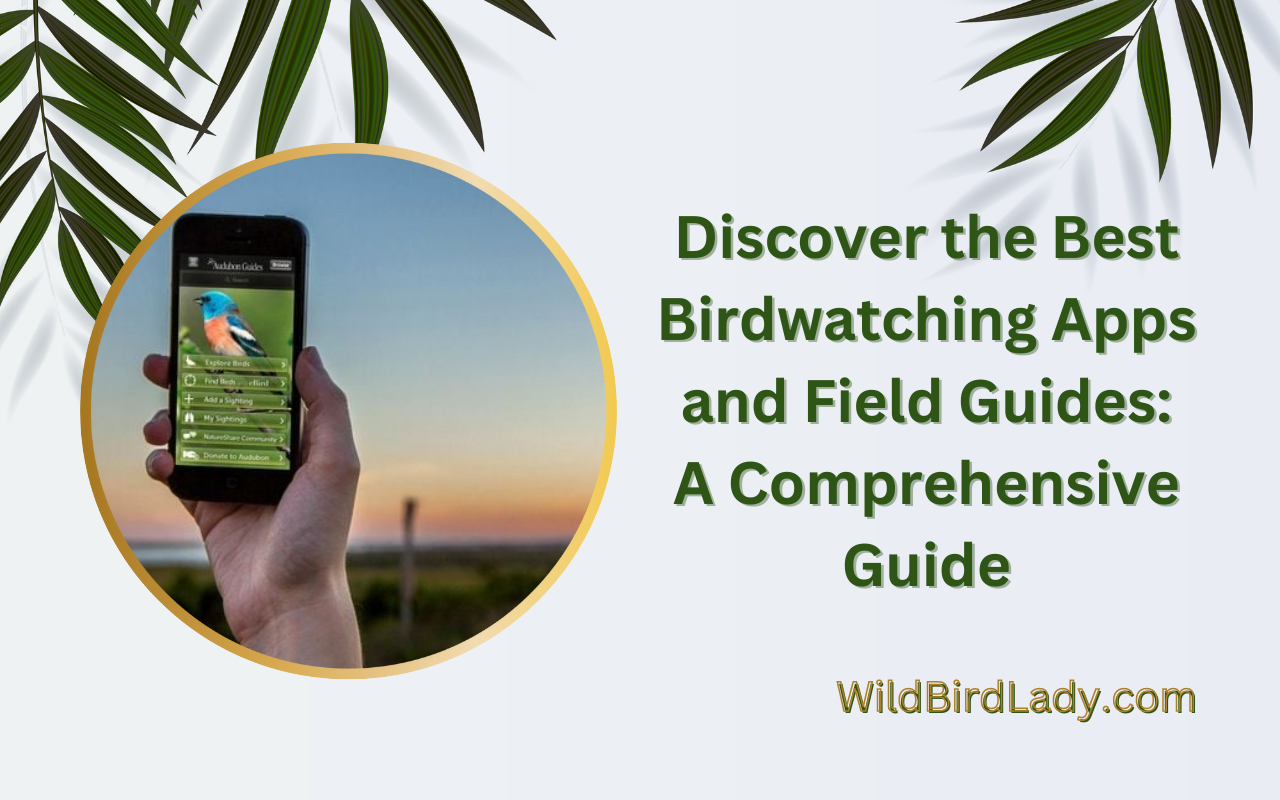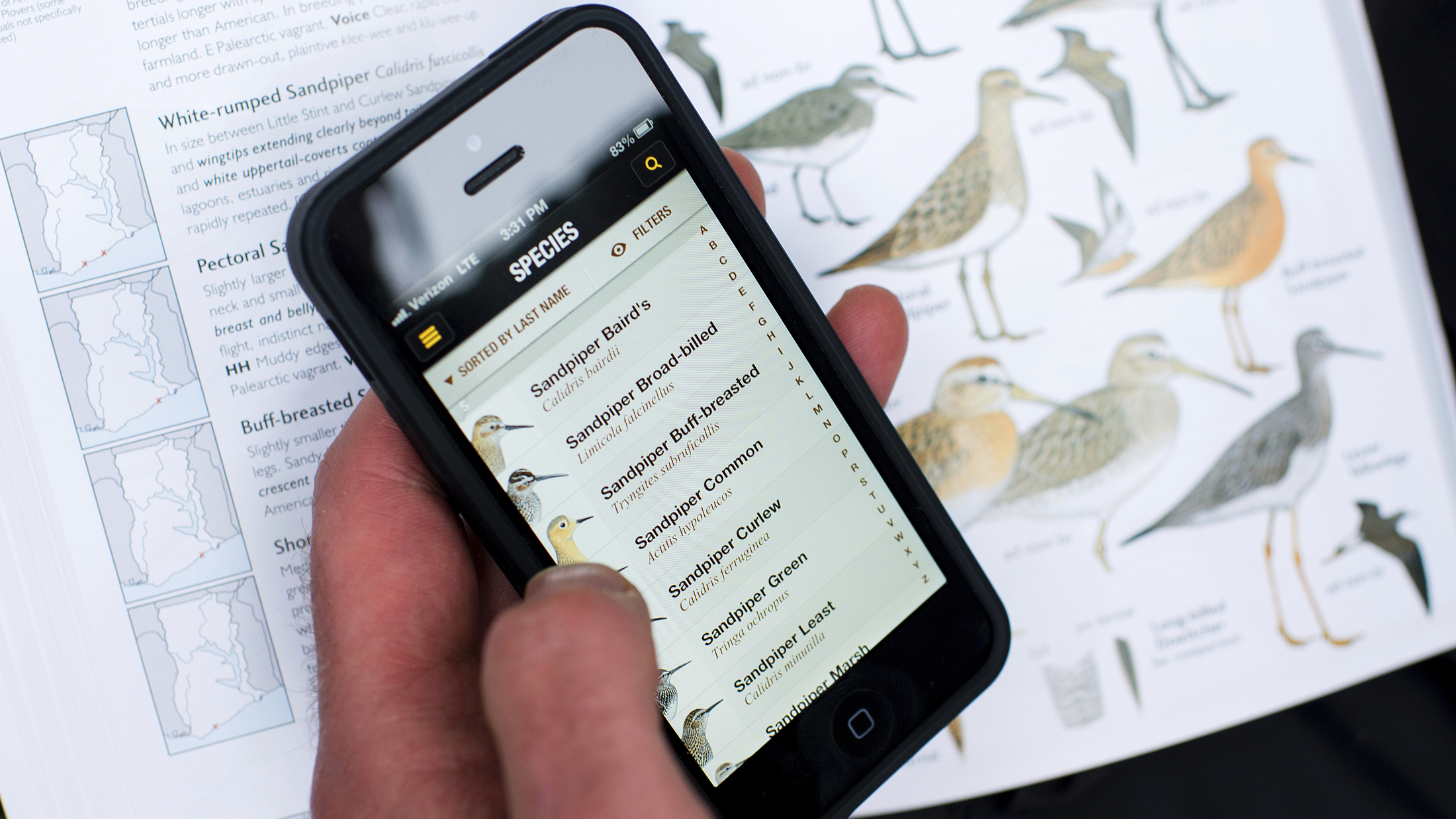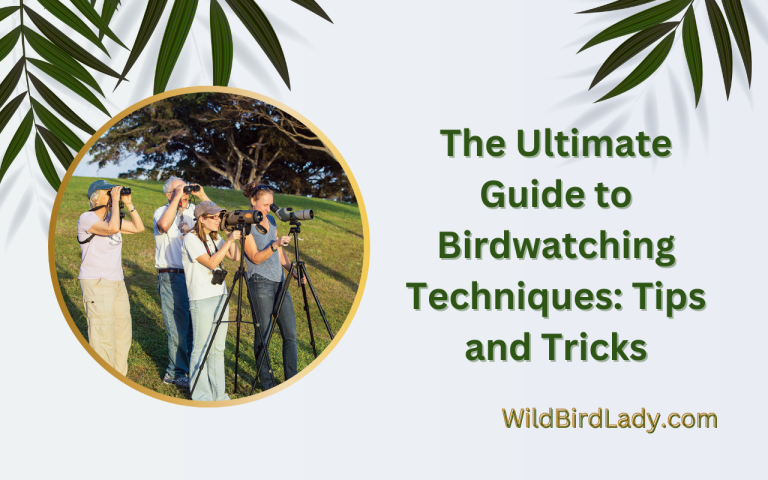Discover the Best Birdwatching Apps and Field Guides: A Comprehensive Guide
Birdwatching apps and field guides provide essential information for bird enthusiasts to identify and learn about different bird species. Birdwatching is a popular hobby or pastime among many people, and birdwatchers often use apps and field guides to help them identify and learn more about the birds they see.
These resources contain information about different bird species, including their physical characteristics, habitat, behavior and calls. They also provide detailed illustrations or photos of the birds to help birdwatchers make accurate identifications. With the help of these tools, birdwatchers can expand their knowledge and appreciation for the rich diversity of birds found in their local area and around the world.
Whether you are a beginner or an experienced birdwatcher, apps and field guides can enhance your birding experience and deepen your appreciation for the natural world.
Why Birdwatching Is Important And Popular Among Enthusiasts
Birdwatching, which is the observation and study of birds, is a popular hobby among many enthusiasts worldwide. It involves observing birds in their natural habitats and noting down unique identifying features such as physical appearance and behavioral patterns. More often than not, birdwatching enthusiasts use birdwatching apps and field guides to enhance their experience.
In this blog post, we’ll discuss why birdwatching is important and popular among enthusiasts.
The Benefits Of Birdwatching
Birdwatching has many benefits, some of which include:
- Stress relief: Birdwatching helps to reduce stress and anxiety levels, as it requires one to be present and focused on the activity.
- Connection with nature: Through birdwatching, enthusiasts gain an appreciation for nature and its biodiversity, which encourages them to become conservationists and protectors of the environment.
- Educational value: Birdwatching offers a wealth of knowledge about birds, their behaviors, habitats, and migration patterns, which help in scientific research and education.
- Physical exercise: Birdwatching often involves long walks through nature, which offers excellent opportunities for physical exercise.
The Popularity And Growth Of Birdwatching
Birdwatching has been growing in popularity, thanks to several factors:
- Accessibility: Birdwatching is easy to do and requires only basic equipment. As such, more people are taking up the hobby and discovering its benefits.
- Community: With the rise of social media, birdwatching enthusiasts can connect with each other and share their experiences and knowledge, creating a robust community of like-minded individuals.
- Technology: Birdwatching apps and field guides have made the hobby easier and more accessible to everyone, including those who are new to birdwatching.
Birdwatching is a rewarding and exciting hobby with many benefits. From a connection with nature to stress relief, educational value to physical exercise, birdwatching enthusiasts have much to gain from this activity. With the continued growth in popularity and technological advancements such as birdwatching apps and field guides, birdwatching is set to become even more accessible and enjoyable to all.
Choosing The Best Birdwatching App: A Review Of The Top Five
Birdwatching has been a popular hobby for years, and with the rise of technology, birdwatching apps and field guides have become more prevalent. Choosing the best birdwatching app can be a daunting task, with so many options available on the market.
We will review the top five birdwatching apps to help you make an informed decision.
App 1: Features, Pros, And Cons
Features:
- Bird identification
- Range maps
- Audio recordings of bird songs
- Built-in social community
Pros:
- User-friendly interface
- Detailed information on each bird
- Ability to connect with other birdwatchers
Cons:
- Limited area coverage for some species
- Audio recordings can be low quality
- Premium features require a payment
App 2: Features, Pros, And Cons
Features:
- Database of over 800 bird species
- Range maps
- Sightings tracker
- Photo sharing
Pros:
- In-depth information on each bird species
- Helpful sightings tracker
- Ability to share photos with other birdwatchers
Cons:
- Limited audio recordings of bird songs
- Not as user-friendly as other apps
- Premium version requires a payment
App 3: Features, Pros, And Cons
Features:
- Bird identification
- Range maps
- Audio recordings of bird songs
- Sightings tracker
Pros:
- Easy-to-use interface
- Detailed information on each bird
- Wide range of audio recordings
Cons:
- Limited number of bird species
- In-app purchases required for full range of features
- Sharing feature not as strong as other apps
App 4: Features, Pros, And Cons
Features:
- Bird identification
- Range maps
- Multiple high-quality photos of each bird
- Built-in social community
Pros:
- Beautiful and detailed photos of each bird
- Active social community allows for sharing and connecting with other birdwatchers
- User-friendly interface
Cons:
- Limited area coverage for some species
- Audio recordings not available
- Premium features require a payment
App 5: Features, Pros, And Cons
Features:
- Bird identification
- Range maps
- Sightings tracker
- Field guide with detailed information on each bird
Pros:
- Easy-to-use interface
- Comprehensive field guide
- Useful sightings tracker
Cons:
- Audio recordings not available
- Limited number of bird species included
- No social community for networking or sharing sightings
There are many birdwatching apps available in the market and choosing the best one will depend on your specific needs and preferences. We hope this review of the top five birdwatching apps will help you make an informed decision on which one to choose.
Happy birdwatching!
How To Select The Best Field Guide For Birdwatching
Birdwatching apps and field guides: how to select the best field guide for birdwatching
As we all know, a field guide is an essential tool for birdwatchers. But, with so many options available, it can be challenging to choose the best one. Whether you’re a seasoned birder or a beginner, this guide will help you pick the perfect field guide for your needs.
What Makes A Good Field Guide?
A good field guide should be easy to use and informative. Here are some of the key points that make a field guide good:
- Layout: A well-organized and structured layout is essential in a field guide. The information should be easy to find and follow, with clear illustrations and photographs.
- Coverage: A good field guide should cover all the essential information about birds, such as their behavior, habitats, and migration patterns.
- Size and weight: The field guide should be small and lightweight, making it easy to carry with you on your birdwatching excursions.
- Durability: A field guide that is durable and can withstand outdoor conditions is ideal.
Traditional Or Digital: Which One Is Better?
The debate between traditional field guides and digital apps has been ongoing for a while. Both have their advantages and disadvantages. Here are the key points to consider when choosing between traditional and digital field guides:
Traditional field guides:
- Pros: Traditional field guides don’t require a phone or internet connection, making them reliable and accessible. They are also easy to use, as you can quickly flip through pages to find the bird you are looking for.
- Cons: Traditional field guides can be heavy and bulky to carry, and updating them can be challenging.
Digital field guides:
- Pros: Digital field guides are lightweight and easily portable as they can be downloaded onto a phone. The interactive features, such as bird call recordings and bird spotting features, make them exciting and informational.
- Cons: Digital field guides require internet access or battery power to function, which can be problematic in remote areas. They can also be difficult to navigate, and updates can be costly.
Top Five Field Guides: Features, Pros, And Cons
To help you make an informed decision, we’ve compiled a list of the top five field guides and their features, pros, and cons:
- The sibley guide to birds: This field guide is known for its detailed illustrations that show birds’ variations in plumage. It’s comprehensive, covering over 800 species of north american birds.
Pros: detailed illustrations, comprehensive coverage.
Cons: heavy and bulky, can be challenging to navigate.
- National geographic field guide to birds: This field guide provides detailed information on bird habitats and behaviors, along with excellent range maps.
Pros: comprehensive coverage, excellent range maps.
Cons: bulky, difficult to use with gloves.
- Kaufman field guide to birds of north america: This field guide prioritizes bird behavior and vocalizations, providing extensive information on these topics.
Pros: emphasizes behavior and vocalizations.
Cons: limited illustrations, can be difficult to use.
- Peterson field guide to birds of north america: This field guide is popular for its comprehensive coverage and easy-to-use layout, featuring vibrant illustrations and photographs.
Pros: comprehensive coverage, easy-to-use layout.
Cons: heavy and bulky, limited information on bird behavior.
- Ibird pro: This digital field guide includes comprehensive information on north american birds, with interactive features such as bird calls and range maps.
Pros: interactive features, comprehensive information.
Cons: requires internet access, costly updates.
By considering the features, pros, and cons of each field guide, you can choose the best one for your birdwatching needs.
How To Get The Most Out Of Your Birdwatching Apps And Field Guides
Birdwatching is a popular hobby that requires patience, attention to detail, and knowledge about different species of birds. With the advancements in technology, birdwatching has become more accessible and convenient than ever before. Birdwatching apps and field guides are two essential tools that can help birdwatchers to identify, learn about, and appreciate different bird species.
In this blog post, we will discuss how to get the most out of your birdwatching apps and field guides.
Tips And Tricks For Using Apps In The Field
Birdwatching apps have become increasingly popular among bird enthusiasts since they offer a wealth of information, pictures, and bird calls at your fingertips. However, when you’re out in the field, you want to ensure that you’re making the most of your app to enhance your birdwatching experience.
Here are some tips and tricks to help you use birdwatching apps effectively:
- Before heading out, download the required maps and birding data since you may not have access to a strong internet connection in the field.
- Choose an app that has an easy-to-use interface and offers customizable notifications for birds in your area.
- Familiarize yourself with the app’s bird calls for easy and efficient identification.
- Take advantage of the app’s camera feature to capture images of birds you see in the field.
- Make use of the app’s built-in recording feature to save bird songs and calls to help you identify them later.
Maximizing Your Use Of Field Guides
Field guides are essential resources for birdwatchers since they provide comprehensive information about different types of birds and their behaviors. However, if you’re not using them effectively, they can be overwhelming and confusing. Here are some ways to make the most of your field guides:
- Choose a guide with realistic illustrations and descriptions of each bird’s characteristics, behaviors, and habitat.
- Use the key guide at the beginning of the book to narrow down to a specific group of birds you’re interested in.
- Use the guide’s maps to identify the expected range of each bird species.
- Pay attention to details such as color, size, and shape of each bird to differentiate between similar-looking species.
- Take your time and enjoy the process of learning more about each bird species as you encounter them in the field.
How To Benefit From Available Online Communities
Joining online communities related to birdwatching can provide opportunities to connect with other bird enthusiasts, share your experiences, and learn new tips and tricks. Here are some ways to benefit from online birdwatching communities:
- Join established birdwatching groups such as audubon or ebird to explore new birding hotspots and learn about current sightings.
- Utilize social media platforms such as twitter or instagram by following bird enthusiasts and using relevant hashtags to connect with other birdwatchers.
- Participate in online forums such as birdforum.net or birding-aus to ask questions, share your knowledge, and learn from other birdwatchers.
- Attend online birdwatching events, such as webinars or online bird counts, to connect with other birdwatchers from around the world.
By using these tips and tricks effectively, you can enhance your birdwatching experience and develop a better understanding and appreciation of the various species of birds you encounter. Remember to enjoy the process and appreciate the beauty of nature!
Common Mistakes To Avoid When Using Birdwatching Apps And Field Guides
Birdwatching apps and field guides provide bird enthusiasts with a wealth of knowledge at their fingertips. However, just like with any technology, they can be prone to errors and inconsistencies. Here are some common mistakes to avoid when using birdwatching apps and field guides:
Overreliance On Technology
With the convenience of birdwatching apps and field guides, it’s easy to fall into the trap of relying on them too heavily. Here are some points to keep in mind:
- Remember that apps and guides are only tools. They can help you identify birds, but they shouldn’t be your only source of information.
- Use your instincts and experience in conjunction with the apps and guides. Observe a bird’s physical characteristics, behavior, and habitat to cross-check app and guide results.
- Make sure that you are using a reputable and up-to-date app or guide. Outdated or inaccurate data can lead to incorrect identifications and missed opportunities for discovery.
Ignoring Other Sources Of Information
There is a trove of information available beyond birdwatching apps and field guides. Ignoring it can be a critical mistake. Here are some ways to broaden your knowledge:
- Join local birdwatching groups or organizations to learn from experienced birdwatchers and gain insights about local bird populations.
- Local stores and park offices sell books that provide both detailed information about the birds in the area as well as fascinating facts about birds in general.
- You can learn from birdwatchers on social media and on citizen science platforms, both of which are beneficial ways to exchange information.
Lack Of Research And Preparation
Preparation and research are essential to successful birdwatching. Here are essential points to keep in mind:
- Before venturing out, research the area that you will be visiting. Look for top birdwatching spots, maps of the area, and information on the birds that are in that area.
- Keep track of the environment and weather conditions. Make sure to bring appropriate clothing, gear, and equipment.
- Finally, practice your observation and note-taking skills. Record your observations in detail, including the bird’s species, behavior, location, and other relevant information. Use apps and guidebooks to supplement your notes periodically.
Using birdwatching apps and field guides adds convenience and enjoyment to birdwatching, but using them isn’t enough. Research, preparation, and observation skills are just as important for a successful birdwatching experience. Follow these guidelines to make sure you get the best possible experience, and don’t forget to enjoy the journey!
Frequently Asked Questions Of Birdwatching Apps And Field Guides
What Are Birdwatching Apps?
Birdwatching apps are smartphone applications designed to help bird enthusiasts identify birds and record sightings. They typically provide access to birding databases, photos, and information on habitats and bird behaviors.
What Are Some Popular Birdwatching Apps?
Some popular birdwatching apps include merlin bird id, ibird pro, birdseye birding, audubon bird guide, and ebird. Each app offers unique features such as personalized bird lists, bird calls, and social networking for birders.
What Are Birding Field Guides?
Birding field guides are printed or electronic resources used outdoors to aid in bird identification. They typically feature pictures, range maps, and descriptions of bird species and their behavior, habitat, and vocalizations.
Is It Better To Use A Birding App Or Field Guide?
Both birding apps and field guides have their advantages. Apps offer portability, up-to-date birding information, and advanced search features, while field guides provide a more tactile and comprehensive experience, including notes on bird behavior and habitat.
Can Apps Replace Traditional Birding Knowledge?
While birding apps and field guides are useful tools for bird identification, they cannot replace traditional birding knowledge and techniques. Experienced birders also rely on their observations and interpretation of bird behavior, vocalizations, and environmental cues.
Conclusion
As we conclude, it is evident that birdwatching apps and field guides have revolutionized the way birders observe, identify and learn about birds. These technologies provide the convenience and accessibility that allows bird enthusiasts to have a personalized and portable bird guide at their fingertips, enabling them to make informed observations and recordings.
With the constant updates and improvements, birdwatching apps have made birdwatching more accessible to enthusiasts worldwide. Furthermore, field guides offer detailed illustrations and notes on bird habitats, behavior, and distribution. Birdwatching is a fun and rewarding activity, and having technology as a companion only enhances the experience.
It is essential to look for the best app or field guide that suits one’s needs and preferences. Whether a professional birder or hobbyist, birdwatching apps and field guides provide an enriching experience for anyone who loves birds.








